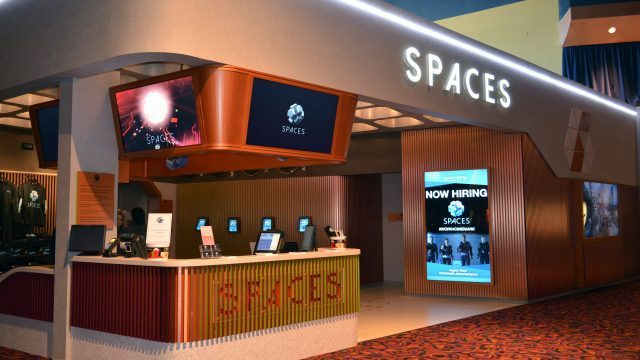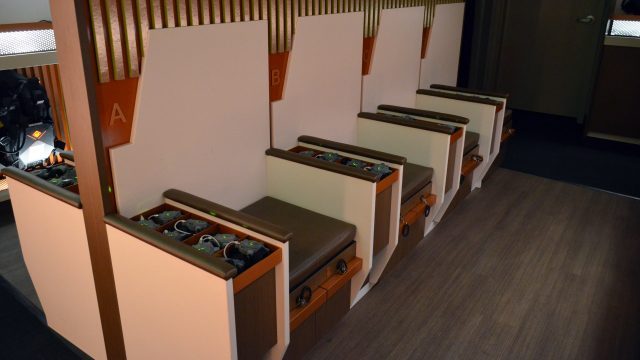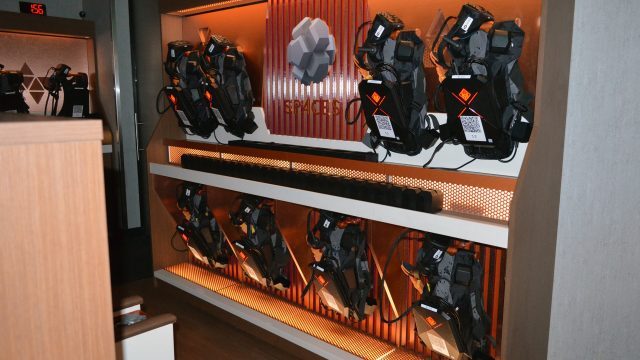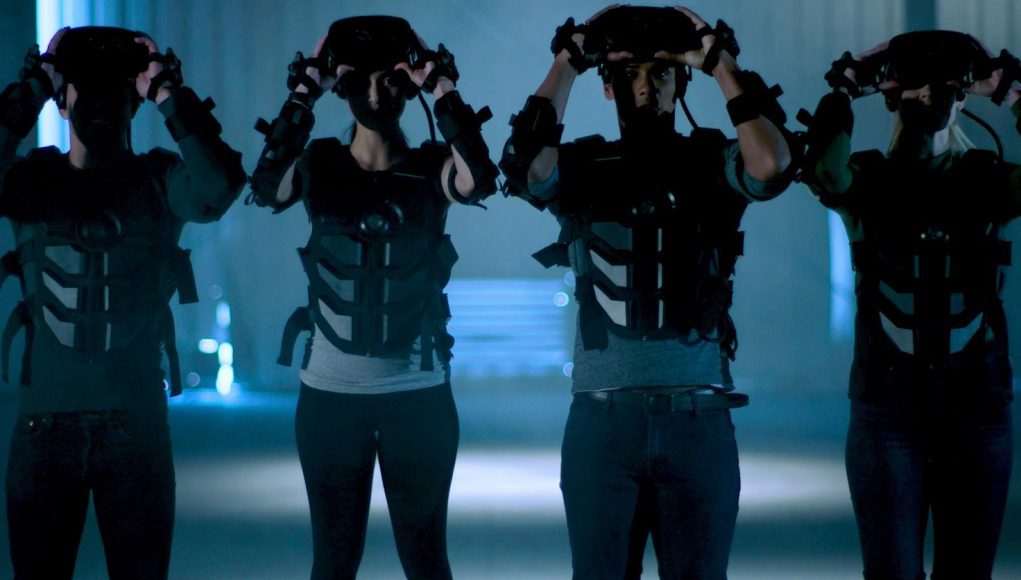Cinemark, a major US movie theater chain, this week welcomes the SPACES VR attraction to its Century 20 Oakridge theater in San Jose, CA. The attraction, which currently offers a Terminator Salvation VR experience for up to four players, is the now the face of the theater’s effort to expand its entertainment offerings beyond films.
With competition for consumer revenue from video streaming, gaming, and increasingly advanced home theater technology, Cinemark has been on a quest to elevate and expand its offerings to get consumers out of the home and into the theater. Modernization efforts like posh reclining seats, expanded food and beverage options, and extra large format ‘XD’ screens with souped up sound systems are rolling out to Cinemark locations nationwide.
But if you go to Cinemark’s Century 20 Oakridge location in San Jose, CA—one of the region’s top grossing theaters—VR is now front and center at the venue as the next step in a more diverse set of entertainment options that go beyond films.
When you ride the escalator up to the theater’s main lobby, the very first thing you’ll see is a new flagship Spaces venue that’s co-located within the theater. Spaces is a VR attraction platform offering bespoke multi-user VR experiences. Before even passing the ticket-taker, theater goers pass by the slick Spaces kiosk and can see a prominent tease of what awaits them in VR.

For now there’s just one experience available called Terminator Salvation: Fight for the Future, a 15 minute co-op VR adventure designed for up to four players. The experience opens its doors to the public on Friday; tickets are priced at $24 for evening plays and $20 for a matinée.
Like other VR attractions, Spaces offers up VR hardware and content that’s either impractical or unavailable to users at home. So even if you’ve got your own high-end VR headset, the idea is that it’ll provide you with an even more immersive experience, and one that can be shared with your friends.
And for the most part that’s true. In the pre-mission setup phase, players are outfitted with a VR backpack PC, haptic vest, hand and foot trackers, and a VR gun peripheral. With five-point body tracking and a separately tracked weapon, player’s avatars are capable of articulating with more realistic full-body movement than what you’ll find with typical consumer headsets which only track head and hand movements. Haptics from the vest and the gun pack a significantly greater punch than what than the the rumble found in consumer VR controllers. And the two-handed gun feels more intuitive to use since you’ve got a full-sized grip, stock, and foregrip.

In addition to the advanced hardware, the experience itself is built to offer a mixed-reality experience that immerses players even more deeply by putting them in a playspace with physical props that match what’s seen inside the virtual environment. For instance, if you see a railing in the game, you can reach out to touch and it you’ll find that it’s really there in real life too. External haptics are also added to further the illusion; the floor can rumble to emphasize explosion, and fans will blow air on you to replicate the feeling of rotor wash as you board a dropship. The setup does a great job of convincing you and up to three other friends that you’ve been teleported into a completely difference space.

In Fight for the Future you start in a practice range to get familiar with your fully automatic weapons, and then step aboard a lift which takes you up to a dropship that eventually sets you down on a rectangular skyscraper rooftop where your mission takes place. Terminator robots come at you from adjacent rooftops and soak up bullets before exploding.
After vanquishing a few waves of baddies, there’s a brief ‘puzzle’ segment, which really just amounts to moving props from one place to another. While it wasn’t remotely challenging, the use of physical props which are tracked as virtual objects within the playspace is certainly novel and immersive. After moving the props and rotating another into place, the mission reaches a climax with most of the remaining enemies blowing up thanks to your actions. From there you ride the lift back up to the dropship and conclude your mission.
The 15 minutes of playtime feel very brief, and there’s really not much variety or intrigue to the gameplay—surely the result of needing to cast a wide net to appeal players who could range from never having used VR before all the way to veteran VR gamers.
Coming out of Fight for the Future feels a bit like having just exited a high-tech movie production. This is smartly reinforced by a post-game cinematic video that greets you just outside the de-briefing area. Spaces has rigged up several in-game views and camera sweeps that are perfectly timed to capture the key moments of action. Here you also get to see yourself as the robot you were inhibiting, including seeing your face attached to the avatar (having been scanned at the sign-in process). Players get a copy of the video emailed to them for sharing with friends.
The in-game cinematic is a great way to give players a way to take something from the experience and be able to explain a bit about what it was like. There’s definitely novelty to seeing yourself and your friends inhabiting entirely different bodies in an sci-fi world, but the lifeless face-textures and choppy IK body animations in the video unfortunately shift the mood from what would otherwise be a ‘cool’ closet to ‘goofy’.
While the Spaces hardware platform is among the best I’ve seen from a VR attraction to date—offering good headtracking, visuals, and haptics—it’s clear that the company’s current experiential bottleneck is the content.
This first offering, Fight for the Future, doesn’t make particularly good use of the reality-bending capabilities of VR. That said, there’s definitely clear potential in what the attraction offers; the company’s next piece of content will be the big clue as to whether or not they have what it takes to learn, iterate, and push content on the platform forward in the right directions.
As for Cinemark, the Spaces opening at the Century 20 Oakridge theater looks to be something of a proof-of-concept, and has the potential to be brought to many more locations in the future. Being co-located in a theater makes a lot of sense on paper because of the potential to create future content offerings which tie directly into the latest movie craze, offering an extra experience to movie goers who are already primed with interested in a specific franchise.
Even if Fight for the Future isn’t yet the pinnacle of VR attraction content, it still achieves Cinemark’s objective of offering a new entertainment option which simply can’t be recreated in the home—the key, the company believes, to getting customers in the door in a world with an increasingly wide range of entertainment choices.







